The delightful Greek island of Crete is about 162 miles long and 37 miles wide. It has four prefectures (regions); from west to east they are Chania, Rethymnon, Heraklion, and Lasithi. Crete hosts millions of travelers each year. In fact, it rates just behind Santorini and Mykonos in a popularity poll of Greek islands as far as the number of annual tourists is concerned. And for good reason. Crete has a lot to boast about: incredible natural beauty, interesting historical sites, things to do for active (a day-long hike in a gorge perhaps) and more relaxed travelers, and very welcoming hospitality.
Here are the top experiences while visiting Crete.
1. Explore In & Around Chania
Chania Harbor & Old Town
The Old Town of Chania sits on the northwestern coastline of Crete. Chania is an easy place to savor a few days of rest and relaxation. The harbor is a big tourist draw and a fun place to visit. On the western end of the harbor are the Maritime Museum of Crete and the FIRKA fortress (more on these below and well worth a visit). On the eastern end are the buildings that once housed the shipyards which the Venetian navy used to build and repair their ships — and to protect them in the winter.
Today, you’ll find lots of boutique hotels and eateries lining the harbor in between the museum and dockyards. There are also several hotels and restaurants beyond the dockyards; this area tends to be quieter than the central harbor spots. Chania oozes charm. It’s a place to spend time wandering through the variety of shops, linger over delicious meals, and explore a few interesting museums.

When we inquired about restaurants in the area, our hotel concierge suggested that we choose restaurants off the harbor (on side streets) because they had better food without the high prices. However, we found some great places to eat on the harbor — further up on the eastern side by the marina — that served delicious food while being quite reasonably priced. Having said that, there are also delightful restaurants tucked in the corners and alleys of the streets beyond the harbor. We realized that several of them offer idyllic settings and live music; some even host performers showcasing traditional Cretan dances. Ask your hotel’s staff for specific recommendations for restaurant choices when you visit.
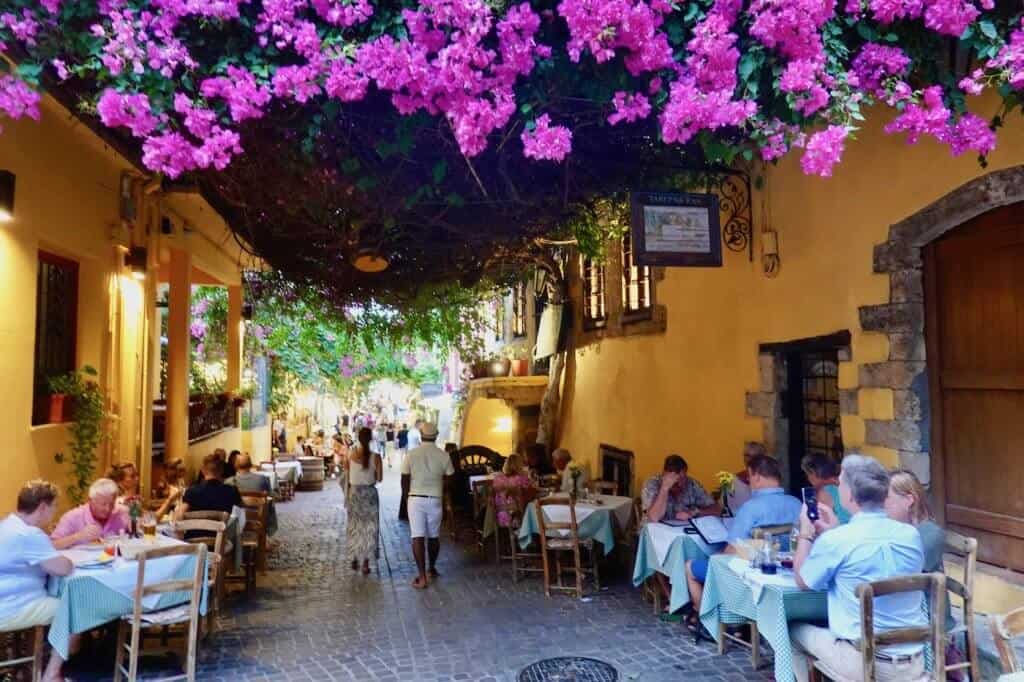
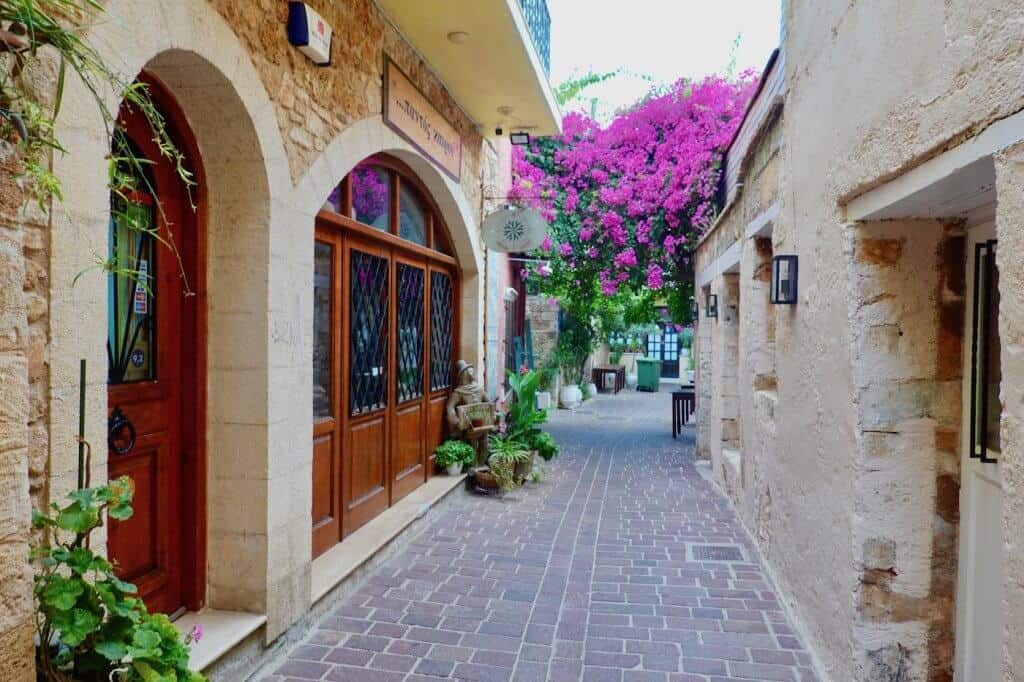
The Old Town of Chania treats you to visual delights as you meander down the narrow streets. It’s important to note that there are no vehicles allowed on these streets, so if you rent a car, you need to park outside the town and walk in. We did that, and it was not a great inconvenience.
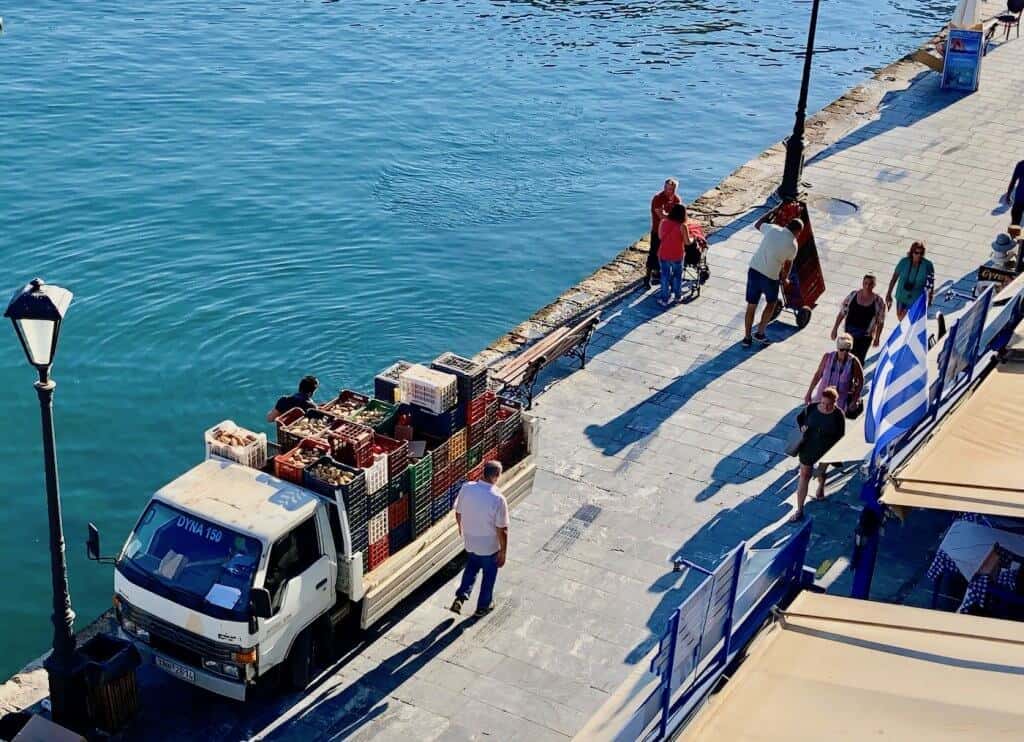
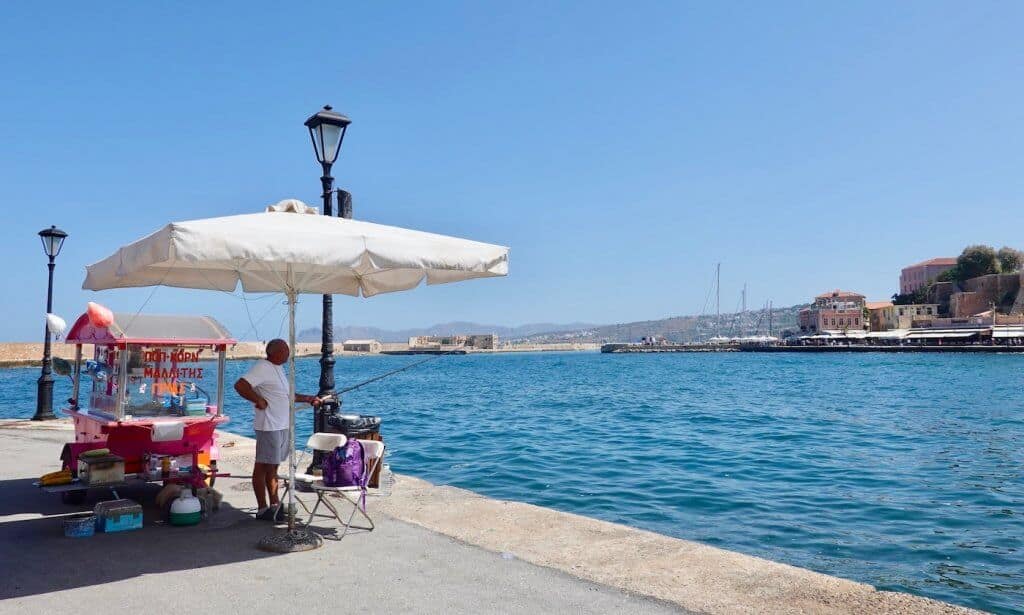
Chania Lighthouse
The lighthouse dates from 1600 when the Venetians built it. It’s had a few restorations since then, of course, but its current look mimics the original design. Its red flashing light can be seen for 7 nautical miles. Today, it’s a popular place to visit. If you want to get to the lighthouse, you walk along a breakwater. There is some unevenness and it’s a bit rocky in places, but it’s not a demanding venture. The views along the way are spectacular. As you walk along the path, you’ll be treated to views of the Sea of Crete to the north and the charming harbor to the south. You’ll find people lingering along the way and taking in the views. When we walked along the breakwater, our hair got wind-whipped and a wave or two broke on us. (What should we have expected while walking between the sea and the harbor?!)
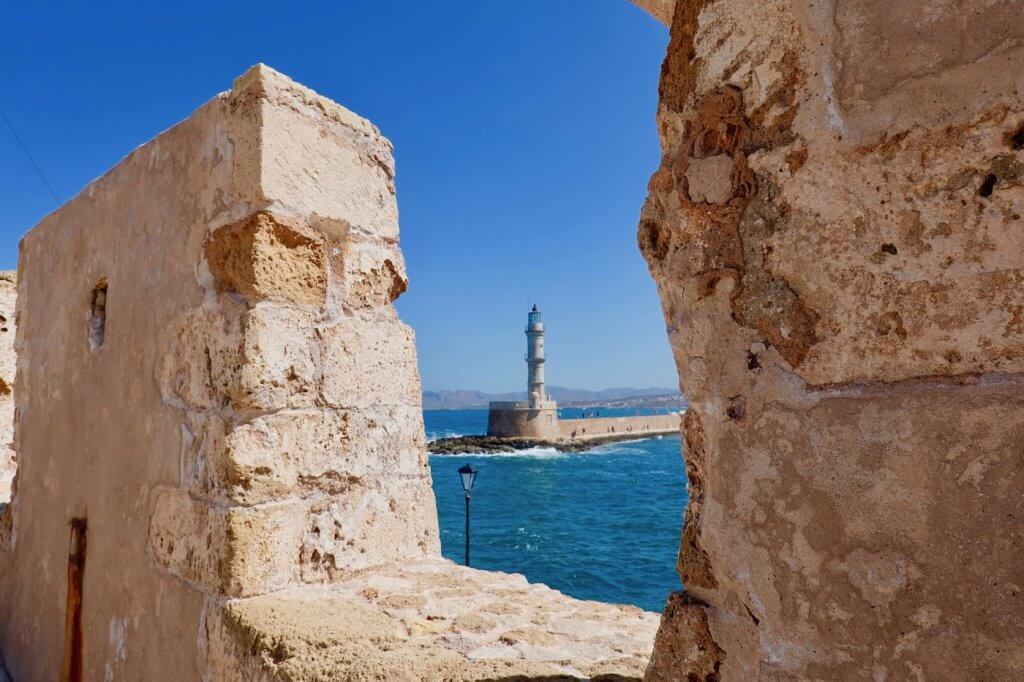
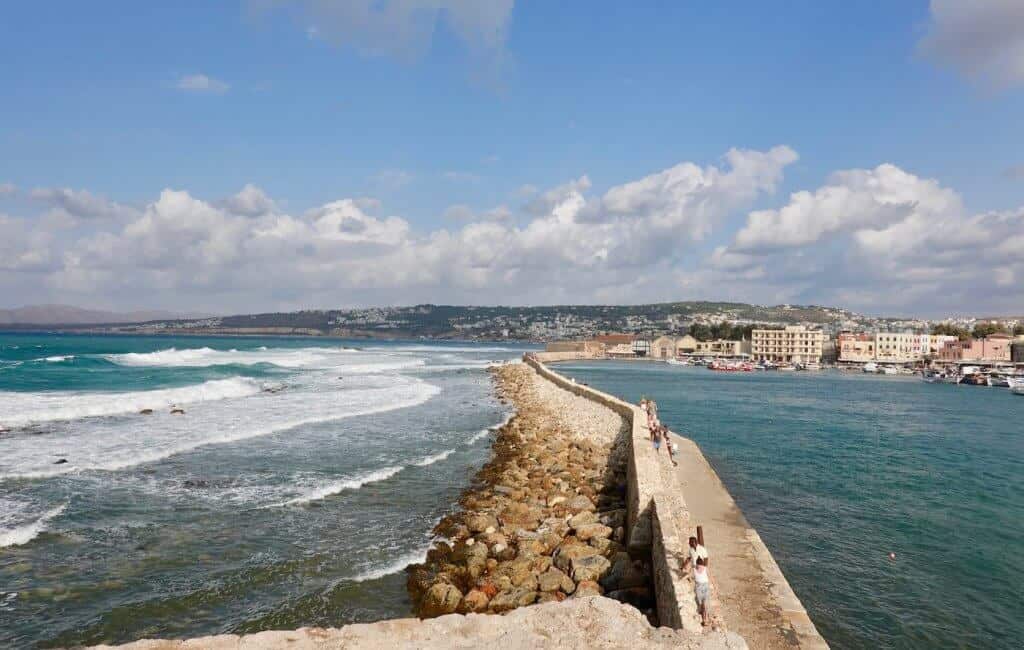
Maritime Museum of Crete
The Maritime Museum of Crete is housed in a fortress on the western end of the harbor. It was used by various occupiers in the past. When the Venetians controlled Crete (1204-1645), they built a fortress to house their military forces. The Ottomans continued to use it during their occupation (1645-1898). During World War II, the Germans used it as a prison.
Today, the fortress serves as a museum highlighting the military might and battles fought on Crete. There are large models of warships and merchant ships, artifacts from soldiers (helmets, mess kits, uniforms, weapons), and maps showing important battles.
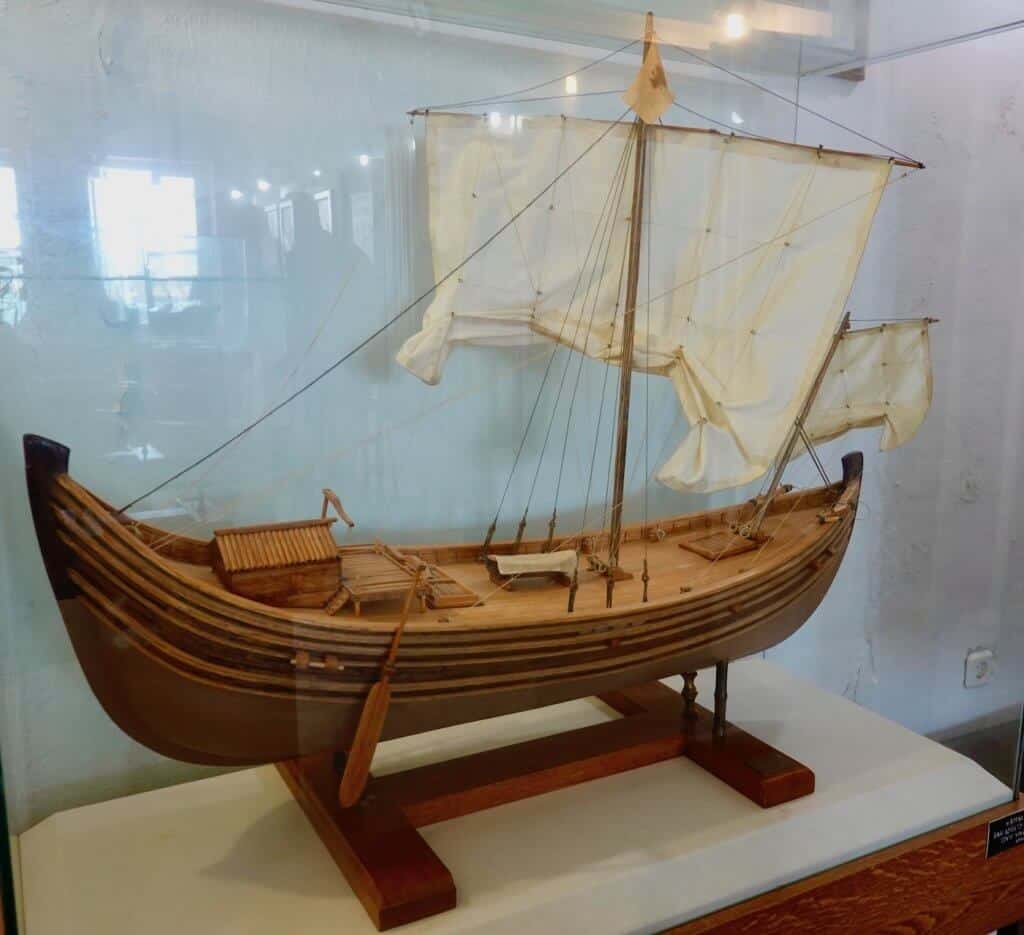
While visiting the museum, we met one of the volunteers who builds the ship models displayed in the museum. Using an enlarged architectural drawing hanging on the wall, he and his colleagues replicate the details in 3D form. He told us it takes the volunteers about two years to build a model ship; the ships themselves are highly detailed.
Archeological Museum of Chania
Housed in a former Franciscan monastery, the Archeological Museum of Chania has artifacts from the Minoan civilization that were found in Chania (the town and surrounding area). Here you’ll view pottery, carvings, jewelry, and other finds.
Venizelos Graves
Want an amazing view of Chania and have a rental car for a short drive from town? Get your cameras ready for great pictures of Chania and the sea while perched high atop a hill. Head over to Venizelos Graves (northeast of Chania) for the views and stop at one or two of the beaches in the peninsula while you’re in the area.

The Venizelos graves provide a quiet sanctuary of sorts and house the graves of a former prime minister of Greece, Eleftherios Venizelos, and his son who also became a prime minister of the country. There’s a small chapel on the site and a striking statue of a famous Cretan rebel who became a human flagpole during the 1897 war between the Turks and the Cretans. The Cretans were fighting for their independence, and he took the fallen flagpole and held it up for all the troops to see and rally around.
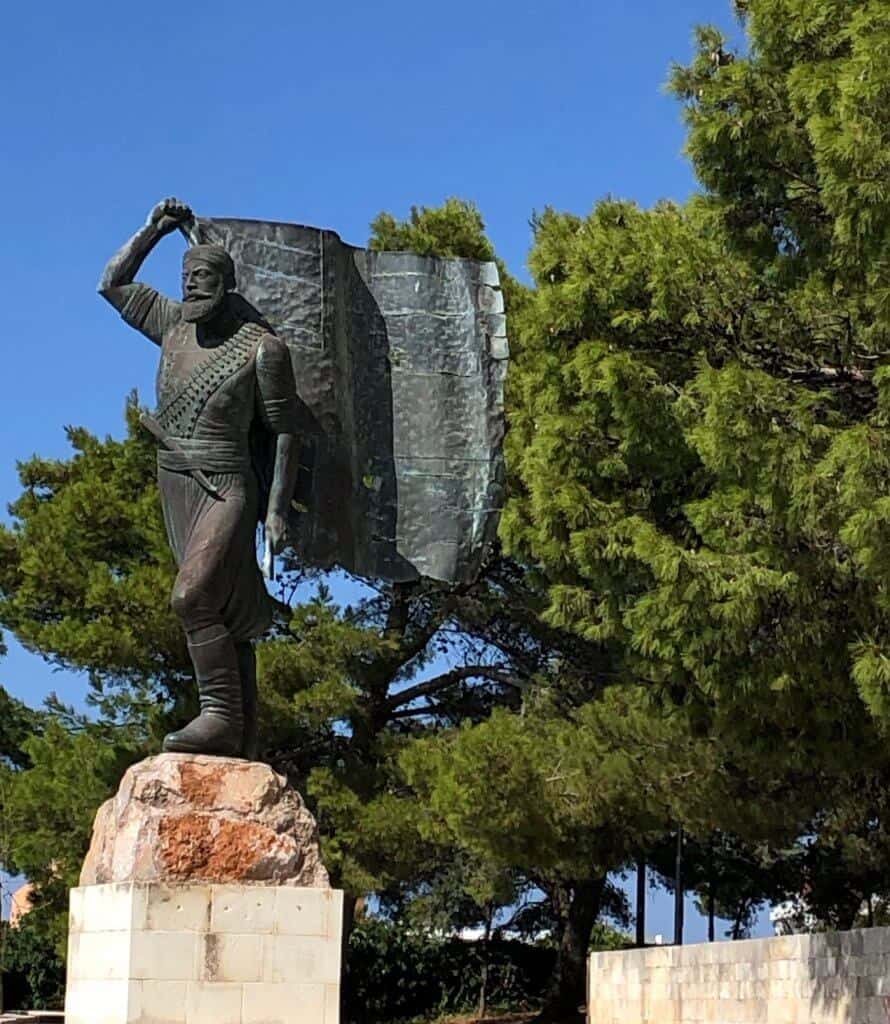
With a little extra time, relax at the Kou Kou Vaya Cafe (just off the property) to continue enjoying the view after ordering a refreshing drink and snack (or meal).
2. Take in Rethymno
Overlooking Rethymno, the star-shaped fortress (fortezza) was built by the Venetians who occupied Crete. Designed by an Italian engineer, it was constructed in the late 16th century. The pentagonal shape provided more visibility (over the sea and land) for the military’s defense of the fort. Although it is a commanding structure, it was seized by the Turks in 1646. The Venetian military settled there — as did the conquering Ottoman military later. During the World War II German occupation, the fortress was also used as a prison.
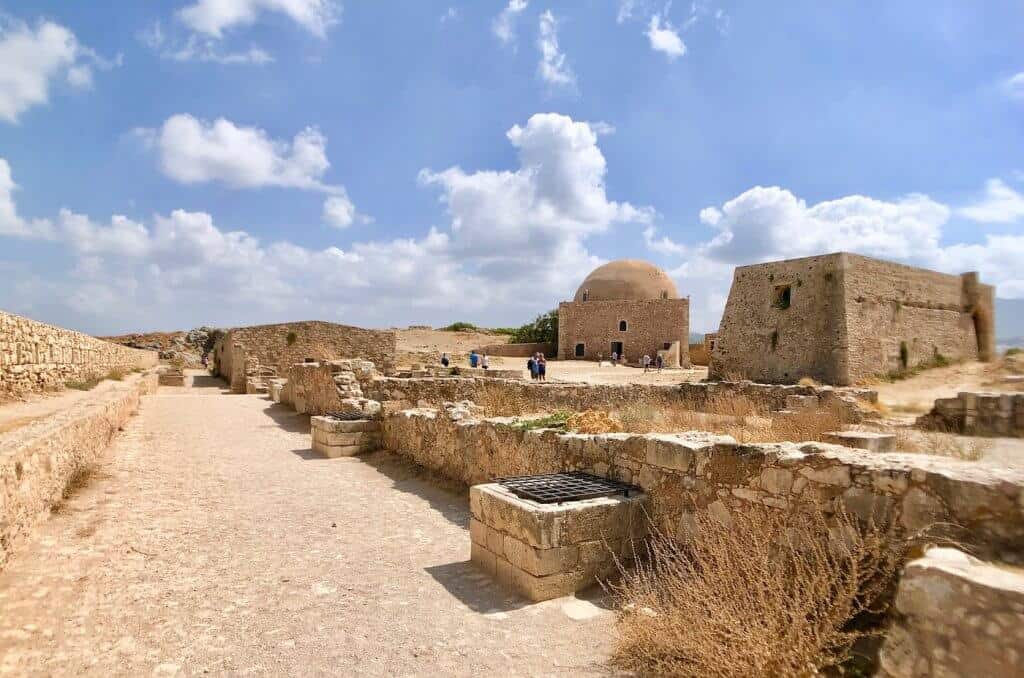
Today, it is a fun place to wander around, walk the ramparts, peer into the guardhouses, sit in the shade of the theater, walk into the mosque (that today hosts art exhibits), and wonder about what life was like for the soldiers living there and guarding the structure.
While in the area, visit the old town of Rethymno and enjoy another picturesque Venetian harbor with its surrounding restaurants and shops.
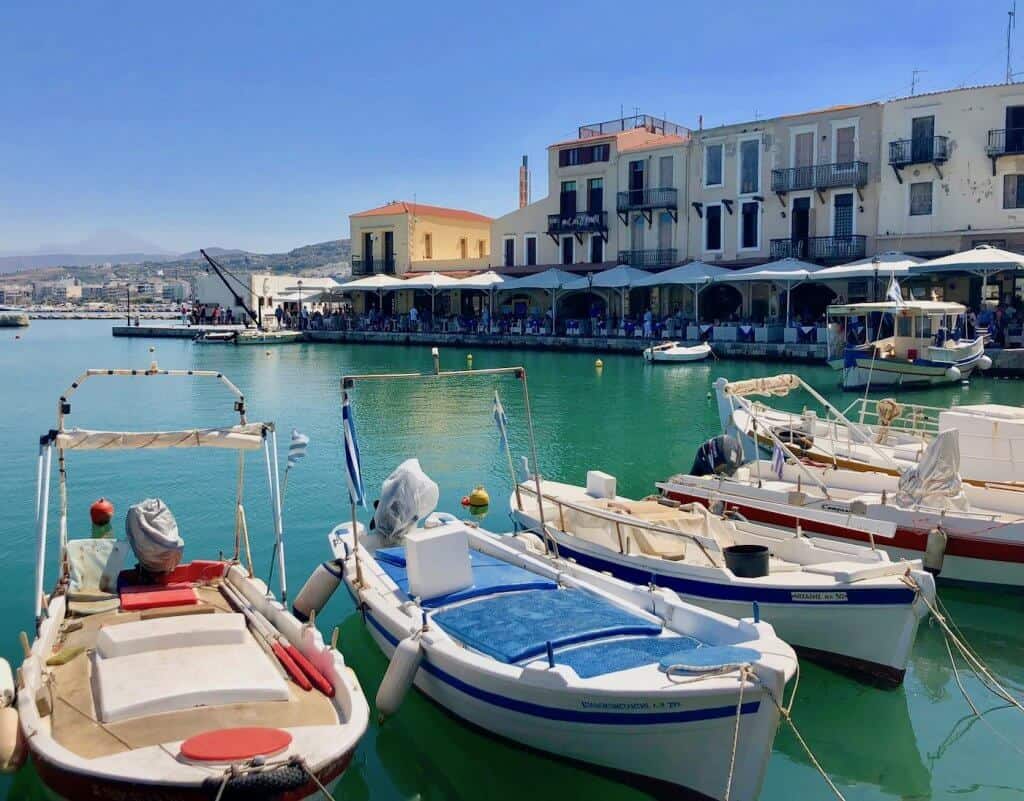
3. Make a Splash at a Cretan Beach
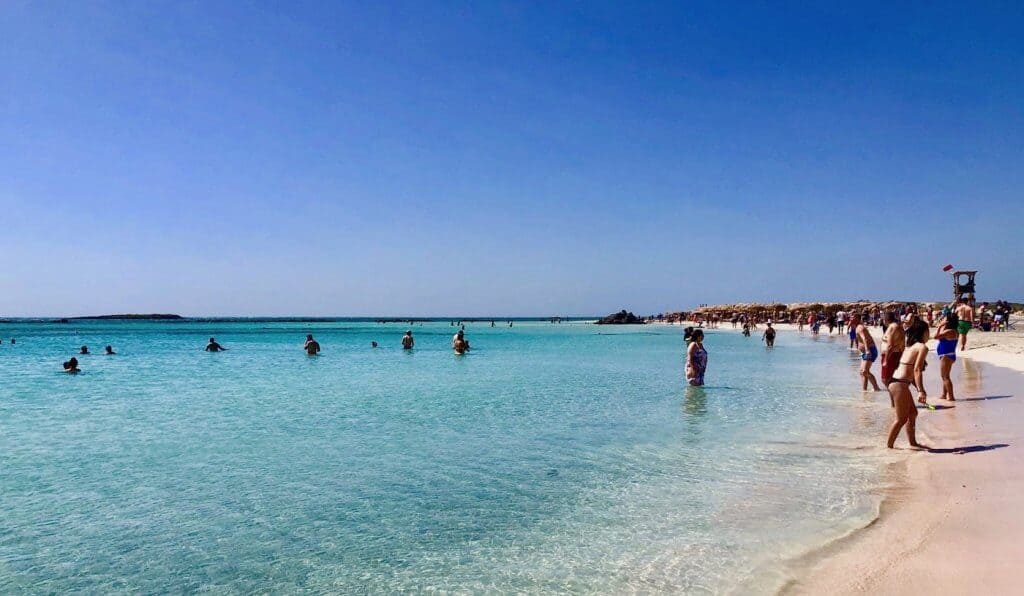
There are so many gorgeous beaches on the island including the famous Elafonissi in southwestern Crete. You can’t go wrong with visiting any of the beaches, and each has its own look and feel. Some bigger beaches draw a lot of visitors; others are more low-key and quiet.
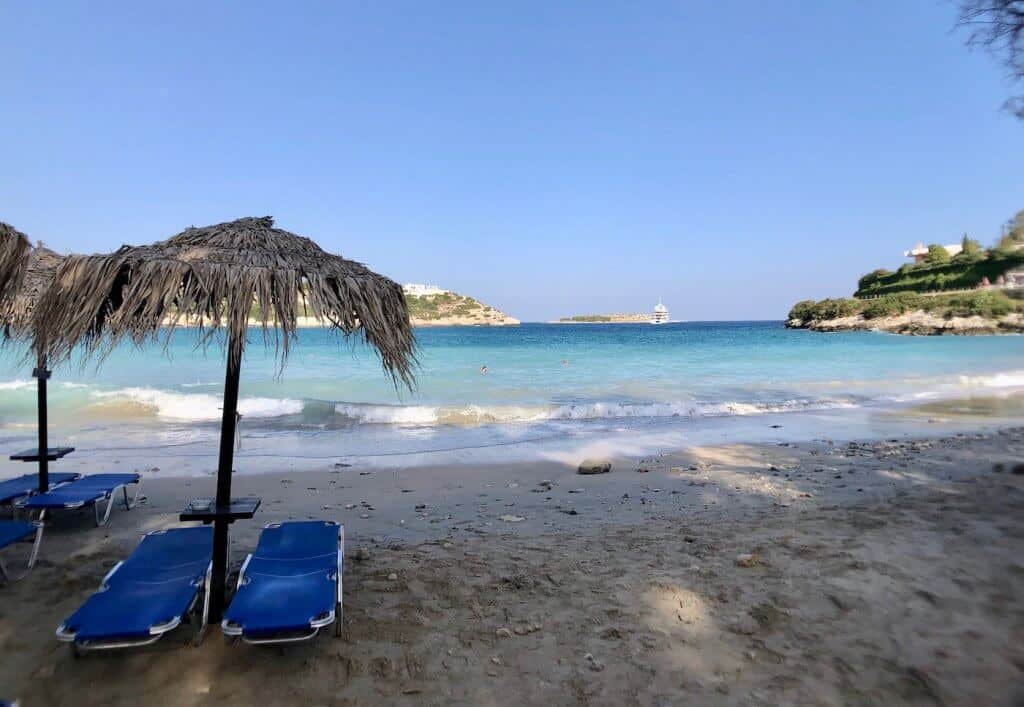
We chose Loutraki Beach because it was recommended by our hotel, is an easy 30-minute drive east of Chania, and fit into our packed itinerary for the day. It is a small, secluded beach in a cove with gorgeous Caribbean-like blue water. Visitors can lay on the beach, on the nearby rocks, or on rented beach chairs. It’s a quiet and relaxing place. It would be easy to spend several hours there — if you have the time in your schedule. When we visited, a yacht was anchored just at the mouth of the cove. What wealthy soul was enjoying this beautiful space with us?!
4. Revisit History in Heraklion
Palace of Knossos
Located just outside Heraklion, the Palace of Knossos is the site of the ancient Minoan civilization. It covered about two football fields worth of land and was surrounded by a town. Today it consists mostly of ruins. It can be a little challenging to put meaning to what you see today if you simply walk through it. Therefore, it’s important that you take a guided tour so that you can understand the long developmental path of civilizations represented here. Plus walking around the ruins with a tour guide helps you imagine what everyday life was like for the people who inhabited this area. Check online (Viator, TripAdvisor) for a guided tour that suits the time you will be visiting.
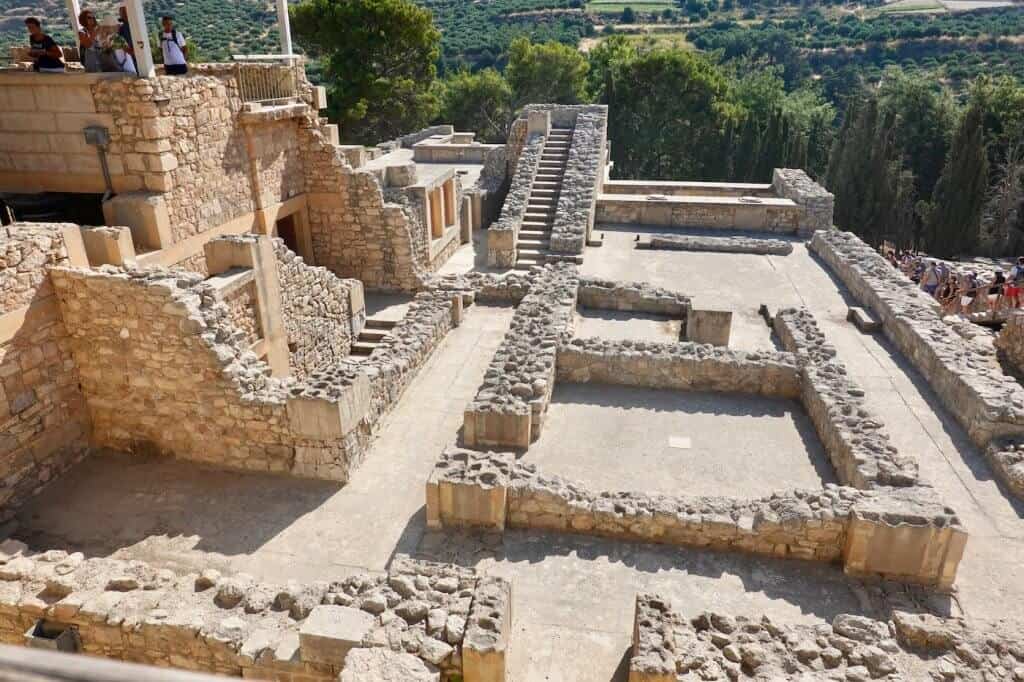
You will not find original artifacts here, so you will need to couple the trip here with a visit to the Archeological Museum in Heraklion (about a 20-minute ride). Although there is not much left at the Palace of Knossos that is original, the Archaeological Museum of Heraklion has plenty of interesting artifacts recovered from the site. Please note that some tours of the Palace of Knossos include a guided tour of the Knossos artifacts in the Archeological Museum.
Archeological Museum of Heraklion
The Archeological Museum of Heraklion is a must-see after visiting the Palace of Knossos. Here you will find actual artifacts from the archeological digs at the Palace of Knossos. A wooden model of the Palace of Knossos is on display to give some orientation for the artifacts. Of course, there are artifacts from other areas of Crete as well.
There was a lot of history occurring in Crete through the ages, and the museum is well laid out in chronological order. You’ll see pottery, weaponry, cooking utensils, craft artifacts (clay weights for weaving looms), jewelry, seals for stamping, clay wine jugs with handles engraved with their origins (ruler), and coins from other countries found in Crete (that are indicators of its status as a trading center).
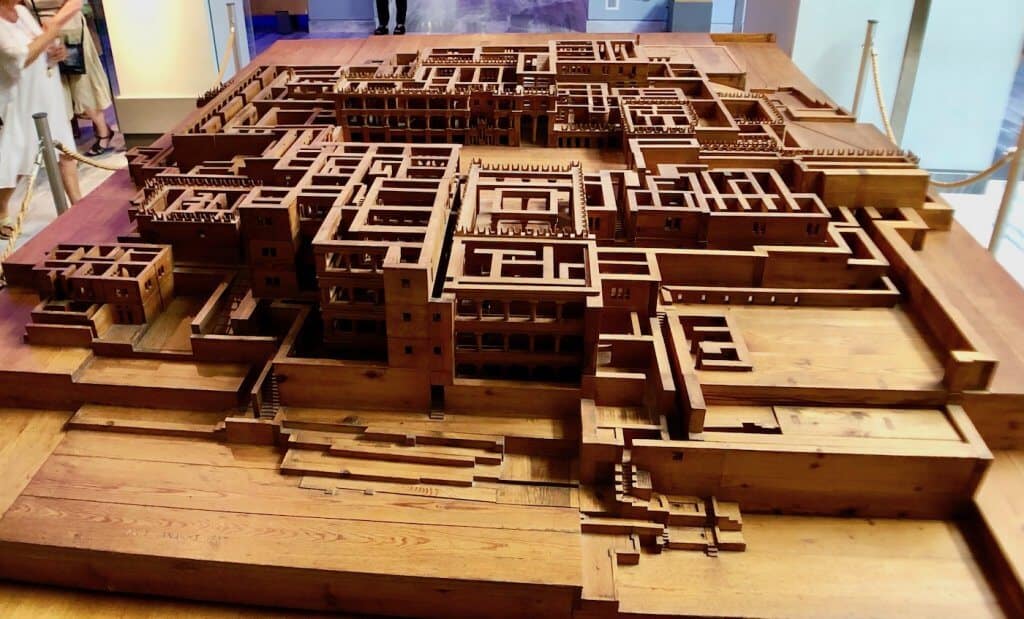
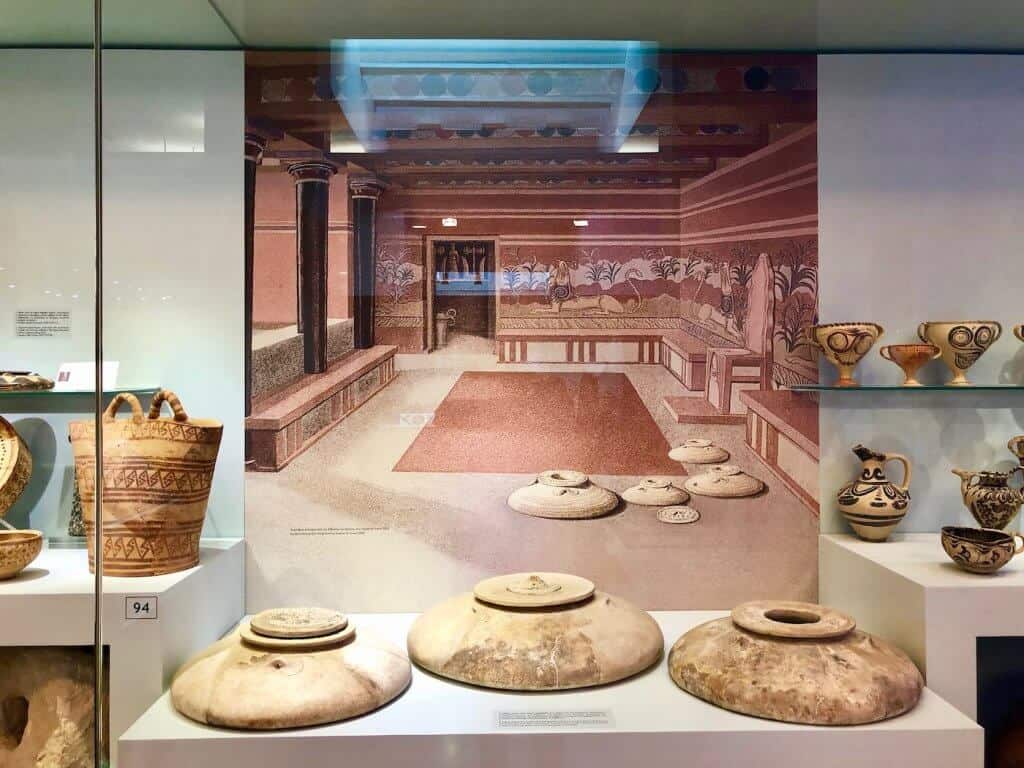
5. Swirl and Sip at a Winery or Two
There are several wonderful vineyards to visit in Crete. You can choose to visit on your own or by taking a tour of several wineries. Check online to find what suits you best. We had time to visit just one while visiting the Heraklion area: Boutari. The company has six vineyards on the Greek mainland and some islands, each growing grapes unique to its terroir. They tend to blend grapes — some varieties that are unique to Crete like Kotsafali with the more well-known Syrah for a delicious red blend and the indigenous Vidiano with Chardonnay for a yummy white blend. We enjoyed a tasting of wines from this vineyard and purchased Scalarea, the red blend, to enjoy back at our hotel room during our stay.
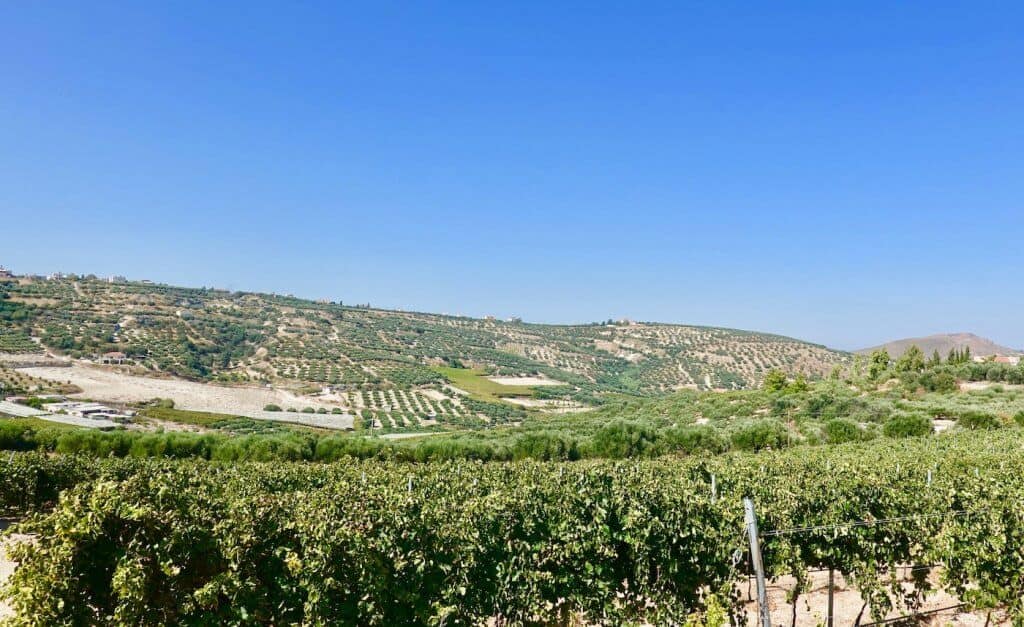
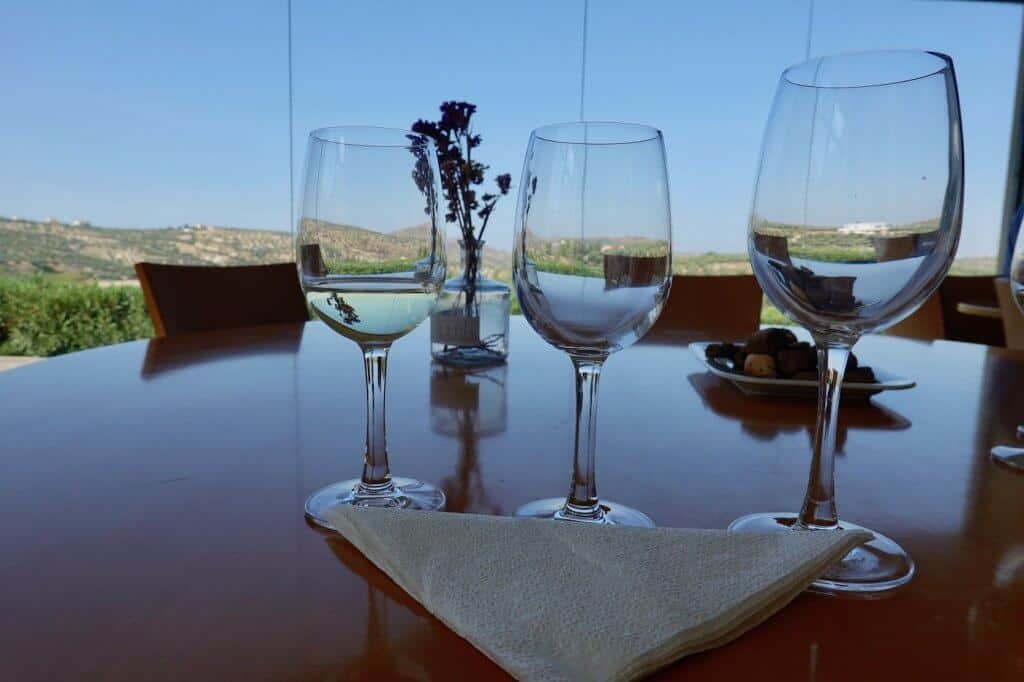
6. Tour with a Pro
Consider one of the many tours available in Crete. There’s so much to see and experience, that sometimes a guided tour just makes sense to experience what you’re after. There are so many to choose from including hiking in the gorges as well as walking tours of historical and cultural sites. There are a variety of boat ride tours, as well. Search online for tours that interest you.
My husband and I chose two tours, and we recommend them both. (Please note that our recommendations are not a result of any discount or special treatment afforded us as the tour companies were not aware that I would be writing about them. I prefer to stay independent of financial incentives.)
Olive & Wine Safari On this full-day tour, we visited an olive oil processing plant, a winery (with tastings), the world’s oldest olive tree, and had a delightful fresco lunch in a tiny hillside village prepared by a 70+-year-old couple. The guides were top-notch, provided plenty of information about the local area, and made sure everyone in the group had a good time. The tour company picks you up and drops you off at or near your hotel.
Cretan Cooking Class Interested in learning more about Cretan food, we took a cooking class in Vamos, a small village between Chania and Rethymno. It was organized through the town’s Tourist Information office. The Cretan chef explained the medicinal benefits of herbs and had us all cooking our evening feast that featured eggplant tapenade, zucchini fritters, and lamb with vegetables. It was an enjoyable late afternoon excursion: spending time learning cooking techniques from a native, meeting new people in the class, and coming home with recipes. Note that there is no transportation provided for this activity; but if you have a rental car, it might be a great option for you.
Overview of Crete
This southern Greek island has a long history. It’s been inhabited since 7,000 BC, but it’s most well known for the Minoan civilization dating to 3,000 BC. There were a number of other societies that called Crete home including the Mycenaeans and the Dorians. Crete was also under Roman, Byzantine, Venetian, Turkish, and German occupation.
Cretans, the people of Crete, are a proud group. Their ancestors fought for their freedom from early aggressors and, later, the Germans during World War II.
Interestingly, the island has a self-sufficient food supply including fruit (such as kiwis, oranges, lemons, limes, bananas, and apples), vegetables (such as lettuces, apples, cucumbers, beets, onions, potatoes), herbs, meat (such as lamb, rabbit, chicken, goat) and fish.
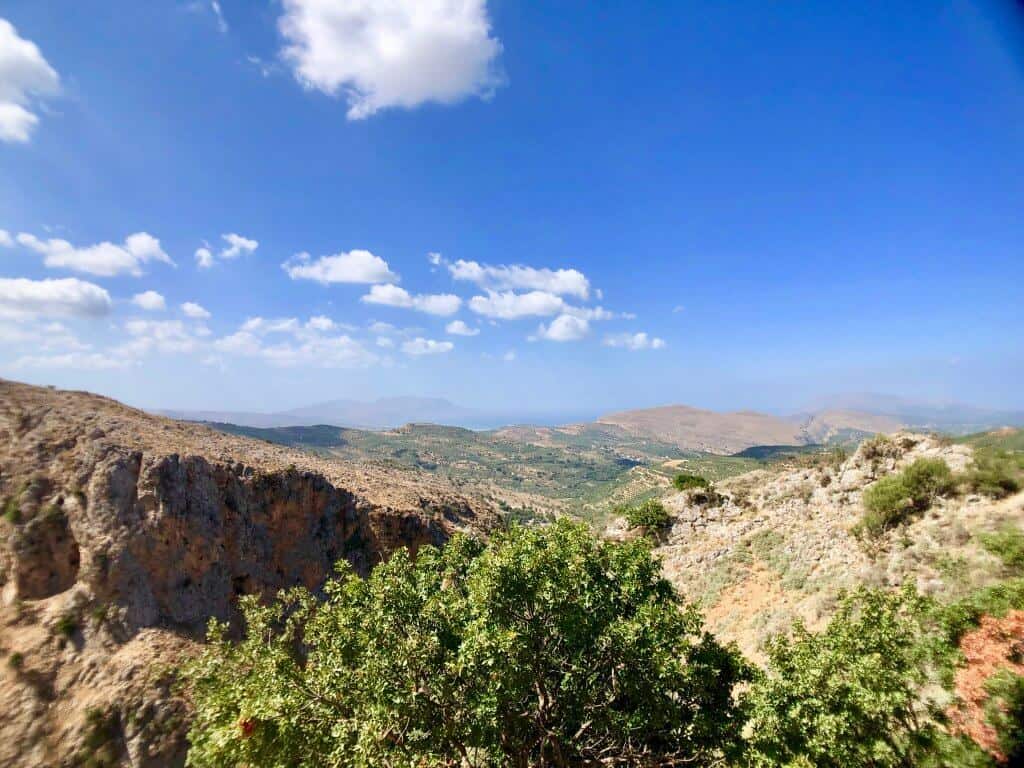
Grape production for winemaking was a major portion of agricultural production in the area until the early 1980s when blight struck and wiped out most of the vines. The farmers decided to go the more financially stable route and subsequently planted olive trees.
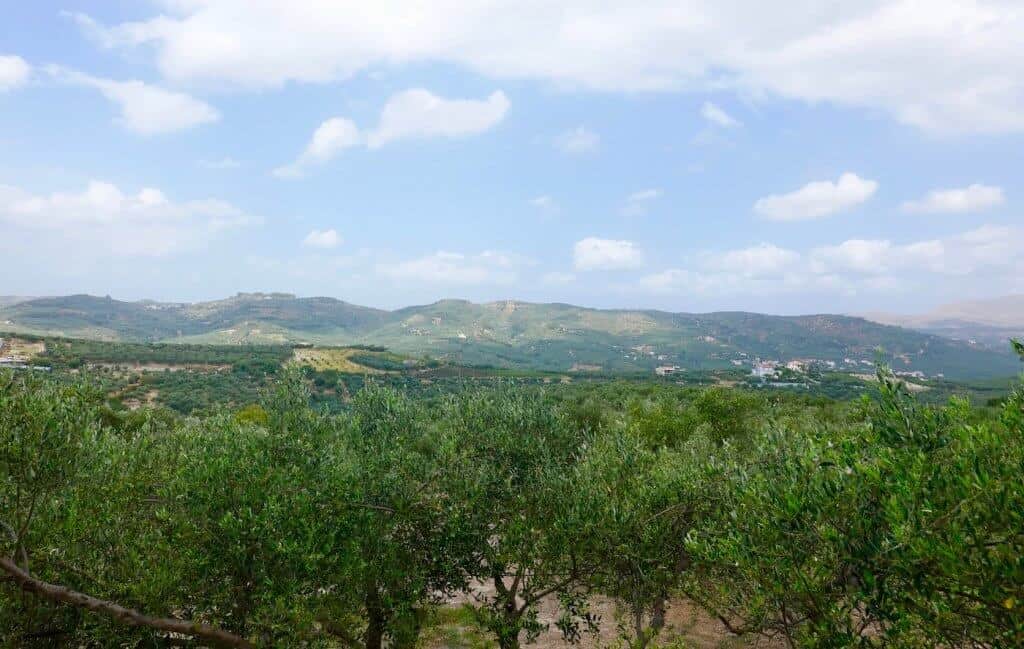
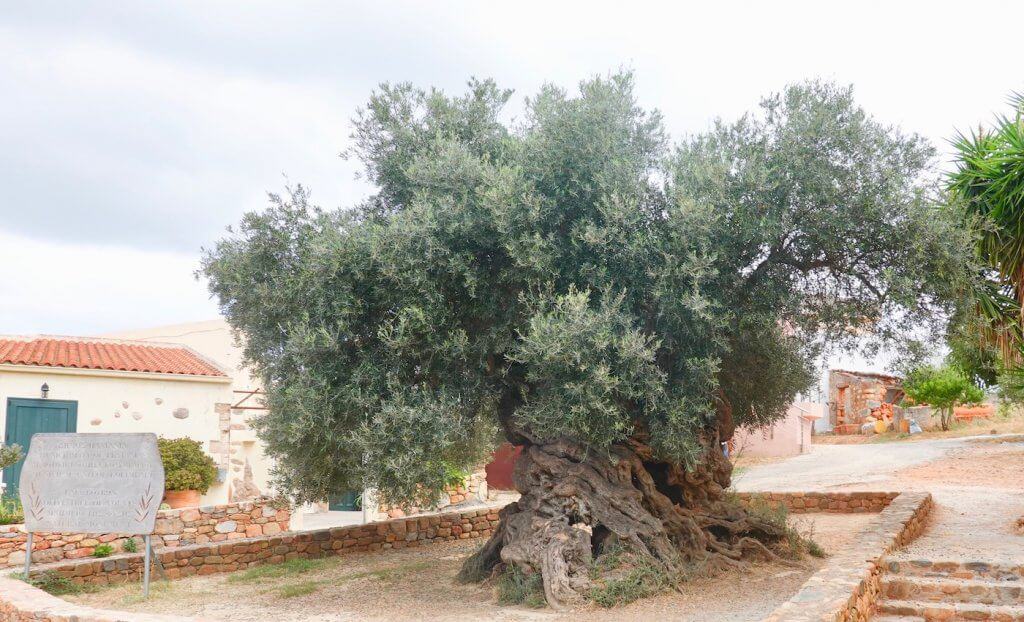
Olive trees grow on the slopes — some of them very steep — which means that the trees need to be trimmed and harvested by hand rather than by a machine. There’s no machine that would be able to effectively maneuver on much of the terrain. Olive trees are typically planted up to 600 meters high on Crete’s mountains — up to the beginning of the snow line in winter.
Believe it or not, it snows in Crete during the winter above roughly 700 meters. The Cretans are devoted to keeping the island as natural as possible. So, there are no ski resorts or even ski slopes. Rather, cross-country skiing is the chosen snow sport.
How to Get to Crete
The two major airports with service to/from Athens and other islands are in Chania (the former capital of Crete) and Heraklion (the current capital of Crete).
Our Crete Itinerary
With traveling, there are always trade-offs given the time allotted for the visit. My husband, Pop, and I began in Athens and visited its highlights over 3 days; then we began our island hopping: Crete, Rhodes, and Santorini.
If a vacation to this beautiful country is in your future, check out trip planning ideas and tips for a two-week trip to Greece, driving tips for Greece, along with the best of the islands of Santorini and Rhodes.
For our visit to Crete, my husband and I focused on:
- Chania is a charming town hugging a Venetian harbor, from which it’s easy to take tours;
- Rethymno to visit the fortress and the harbor, and another great place to join a tour; and
- the Heraklion area to visit the Palace of Knossos and the Archeological Museum of Heraklion.
Understand Greek Spelling Variations
When planning a trip to Greece, keep in mind that the English spelling of some Greek words can vary quite a bit from one resource to another! For a neophyte like me, I was easily perplexed about town names. For example, I found a variety of spellings when exploring travel options on Crete including the charming town of Chania which is also spelled Hania and Xania (and is actually pronounced like HAN-ya).
As it turns out, multiple spellings for one place are fairly common due to the different ways Greek words/letters are rendered into Roman letters. Once I realized the issue, though, things became more clear (sometimes).
Driving while in Crete? Check out our driving tips that are unique to Greece. One benefit when driving a rental car in Greece is that Google Maps (which we use often) displays a town’s name in Greek and English. This was helpful because many road signs are in Greek, so seeing the Greek spelling on the GPS directions was a benefit. As an important aside, beware of using any GPS system when attempting to drive into any old towns or villages. The GPS systems do not know how narrow some of the side streets can get compared to the actual width of your rental car. Think sharp right or left turn going down a narrow street. I’m sure you can imagine the inferred dangers to a rental car. 🙂
Final Thoughts
There is an abundance of activity opportunities for your days in Crete. It’s an interesting island because of its history, its relative self-sufficiency of resources (not always so on an island that usually has to depend on importing food and other necessities), the charm of its quaint towns, the allure of its fabulous beaches, and the hospitality of its people.
This was one of our stops on our visit to Greece. For more information on planning a trip to Greece and where to visit, check out these other posts:
- A Guide for Two Weeks in Greece
- Driving Tips for Greece
- Top 6 Things to Do in Santorini
- Top 8 Places to Visit in Rhodes
By the way, if you’re dreaming of relaxing in luxury while taking in incredible views, you may want to consider the Elounda area on the eastern tip of the island. It abounds with high-end hotels and spas. There are incredible views in many spots on the island, of course, but Elounda is known for its resorts — with the added advantage of upscale accommodations.
And because this made a lasting impression from our trip: A 79-year-old Cretan explained the reason we clink glasses of wine when cheering others. It’s all due to using all five of our senses. As he explained it, we can see the wine, we can smell the wine, we can taste the wine, and we can touch the wine. However, we need to clink our glasses so we can hear them!
To make sure you remember all the great experiences on your next trip — be it Crete or somewhere else — take lots of pictures and create a photo book of your journey when you return home. You’ll be glad you did!
Comments?
If you’ve visited Crete and have suggestions for other travelers about this beautiful island, go ahead and let us know your thoughts. What spots were your favorite? Why? Inquiring readers want to know! Thanks! 🙂

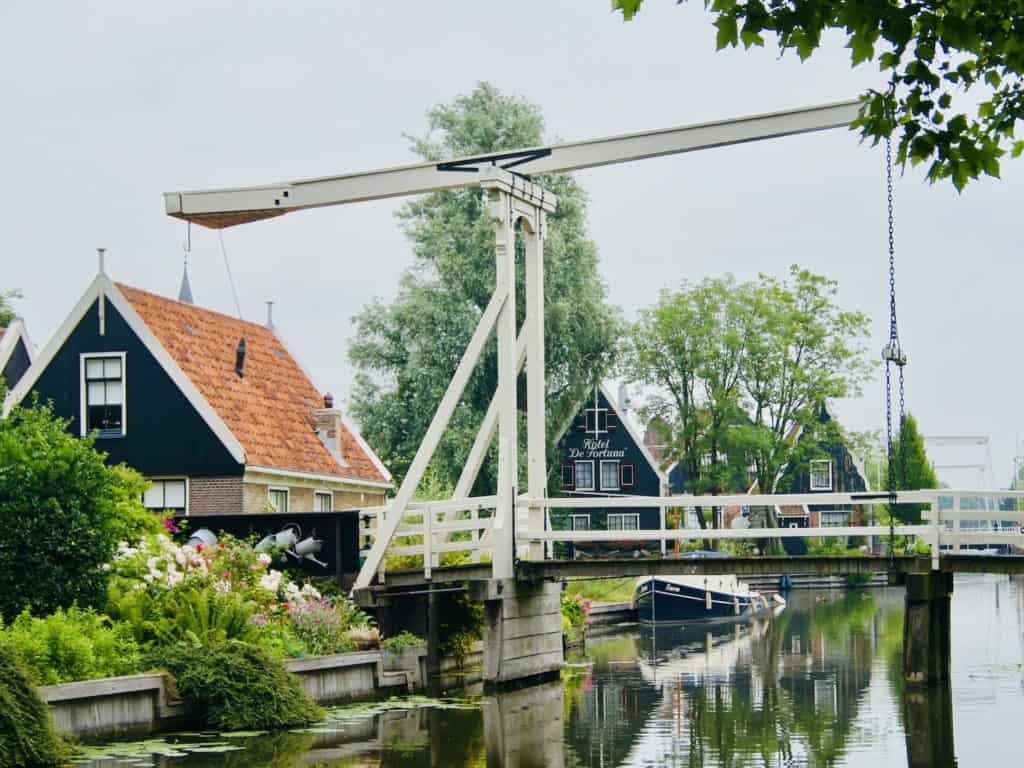
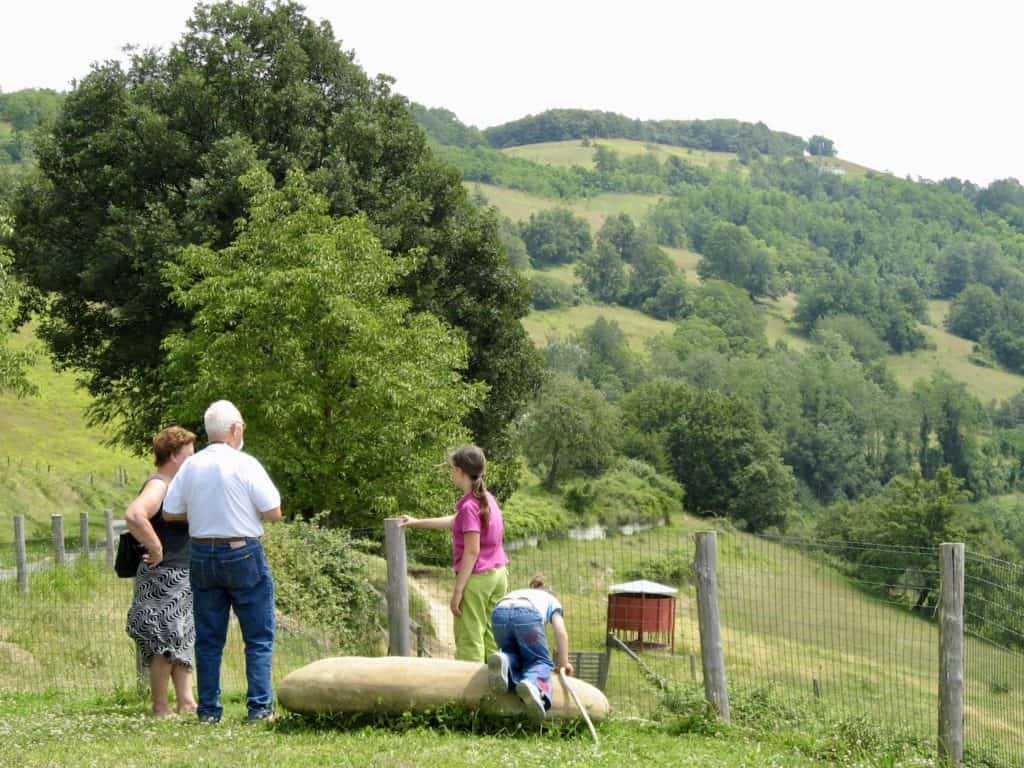
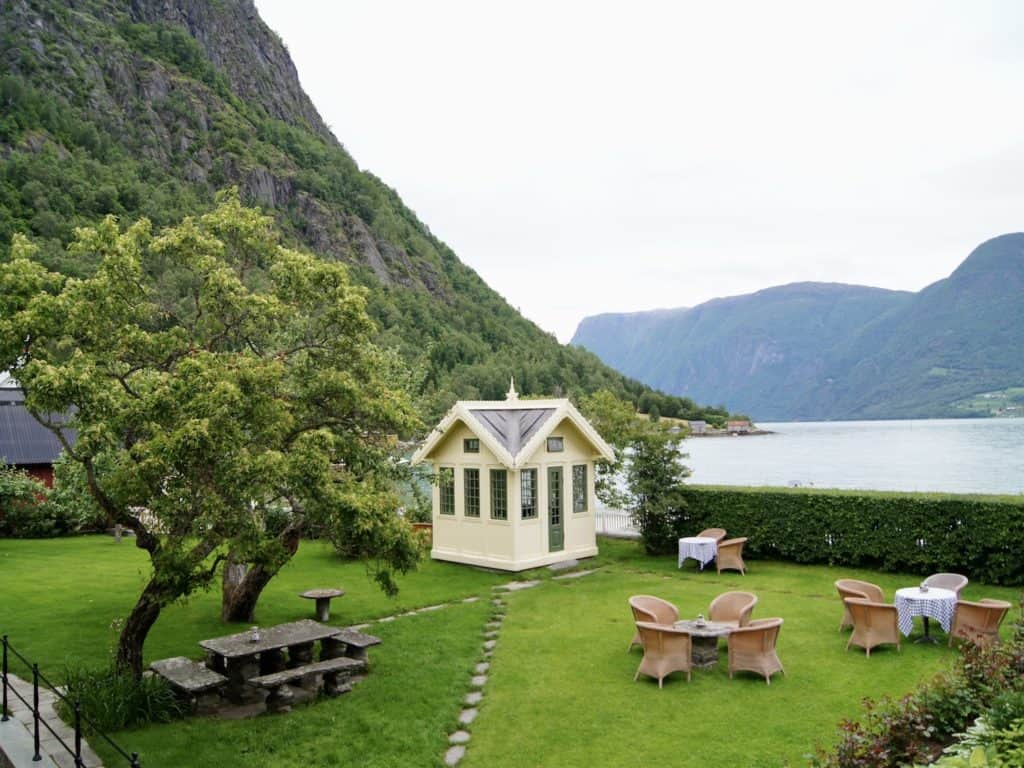

Amazing articles!! Very helpful and comprehensive guide!!
Thanks, Mary! Crete is amazing. Enjoy your travels!